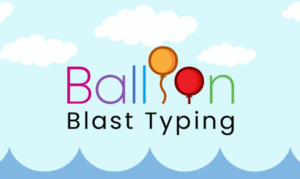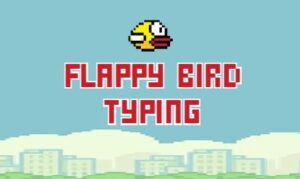Competency means the ability to do something proficiently, and in the current world of computers, proficiency in typing has gone to becoming part of the way we function in our day-to-day life.
It has also emerged as an important area of training as learners progress through their academic endeavours and to the workplace, typing proficiency is now one component of new literacies in the digital age. But typing is not only about pushing buttons – it is a basis to communication, logic and imagination. One could ask how the education in typing can create a spark and change: Let’s dive in!
1. The Digital Shift: The Ability to Type: A Skill That Should Not Be Ignored
Think about this: how often do people type in their daily lives? Whether it is sending an urgent email, writing an essay or talking on a group assignment, typing is the foundation of technology based communications. Indeed, students who are able to type well complete more tasks, reason better and communicate ideas better.
It is not a ‘luxury’ to type anymore – it is an absolute requirement. Want to code a game? Type. Who wants to research for a school project? Type. This is the place if you wish to share your ideas with the rest of the world. You guessed it: type! When I insist on typing education, I am preparing students for the future by equipping them with a very useful activity.
2. Start Young: Building Typing Skills Early
Research also shows that giving typing by observation in the lower grades is crucial for preventing later ill habits from developing? For example, consider a third-grader who can easily practice correct sitting and typing with emphasis. He or she is much more likely to excel academically and in other areas of life endeavor.
Here are some ways to start early:
• Introduce Typing Games: Entertaining sites such as TypingBird.com can even offer practices of finger position and hand position with games like “Type the Alphabet” & “Frog typing“.
• Set Achievable Goals: For instance, high accuracy is expected with a typing rate of 15 words per minute by grade three.
• Cross-Subject Integration: Teach students to type and use writing activities such as essays, history projects, or even poems to relate typing to practical assignments.It prepares early so that students are conferred with self-confidence to handle any typing assignment that comes their way. What a nice beginning, isn’t it?
3. Make Typing Fun and Engaging
Typing practice is actually not as fancy as people think and and so here – typed is a perfect proof of that saying, right?? Absolutely not! Okay, let’s go from ‘meh’ to ‘Wow!’ when it comes to typing. with these creative strategies:
• Gamify the Process: Regardless of its monotone style, typing becomes a fun activity with scores and leaderboards on sites like TypingBird.com where people can also earn badges.
• Short, Fun Challenges: Consider typing backward, typing race against time, typing favorite songs lyrics.
• Creative Projects: Even the different kinds of paragraphs can be produced through typing, word clouds or presentations. Students should be allowed to exhibit their imagination at sharpening their skills!
Here’s a thought: why not make typing, a class competition? How I always love it when friendly rivalry turns practice into so much fun!
-
 12.5k
12.5k
-
 13.4k
13.4k
-
 35.2k
35.2k
-
 13.8k
13.8k
-
 12.7k
12.7k
4. Typing: This is the Secret Weapon, which can guarantee success at work.
Fast-forward to the future: I must note that your students are now, professionals. Whether they are producing documents for a report, programming applications or coordinating projects, typing is something that will be applied every day. However typing is not only about the typewriting speed but the creation of discipline, work focus, and precision.
Here’s how typing boosts career readiness:
• Communication: Complete texts of emails, proposals, and reports also with correct formatting and style.
• Technical Skills: Any workdesk job in coding or data analysis, any sketching or designing job also demands dexterity in typing.
• Time Management: The faster typing is done, the faster tasks can be accomplished which set aside more time to think rather than type.
Typeracing now prepares students for the future jobs that don’t even exist yet as they learn how to type. That’s part of the reason that education is often said to be an investment – it’s an investment in their success.
5. Inclusive Typing to cater for Every Learner
If typing is not for all then we are certainly living in the wrong century or the wrong world to boot. Let’s explore how we can make typing education accessible and adaptable:
• Assistive Tools: Students with hearing impairments should have pictographic keyboards and students with mobility impairments should be provided with braille keyboards with large-font keys or keys that have Tactile dots on its surface.
• Personalized Lessons: Typing programs such as TypingBird.com address themselves to individual learning paces and difficulties so that nobody is left behind.
• Celebrate Small Wins: Celebrate everything; no matter how insignificant, with certificates, stickers, or a tangible reward to boost confidence at school.
This is why typing education can be a real breakthrough for students with different learning profiles. That is not just teaching the skill set, it’s about teaching the human elements of inclusion and making sure that every student feels Included in the tech-savvy world.
6. The Future of Typing: Creativity Meets Technology
The question that arises now is: what is next for typing education? Life has many prospects, and technology is supplying the prospects. It is equally conceivable to start learning how to type with the aid of a VR game or receive immediate feedback filled with AI generated helpful cues. Sounds exciting, right?
Here’s what’s on the horizon:
• Immersive VR Typing Games: Type in a game of mazes or do the mission related to typing.
• AI-Powered Feedback: Looking at the typing style and then recommending on the best way that one can improve on typing.
• Creative Outputs: Typing and programming are the same thing in a way because you can use typing to design art pieces and music or use typing to design your first game if you’re a beginner.
It has certainly dawned on me that typing is not just a typist’s proficiency area but an art plus a factor of production. There are many strategies within reach that will help make typing education more stimulating and engaging than ever before if new technologies are adopted.
Final Thoughts: Education for All Schools: Through Typing
We no longer type to type: to put letters on the page, or merely to give shape to words in our mind. It’s about embracing innovation in learning, improving interaction, and adoption to the new world that is operated online. With important ideas of typing education being playful, integrated, and liberal, we pave the way to help children achieve the maximum of their potential.
So, what are you waiting for? The time has come to begin incorporating those transformational strategies at the present day. Combined we have the ability to transform typing into a super power that defines the future of the world’s leaders, scholars and inventors.








